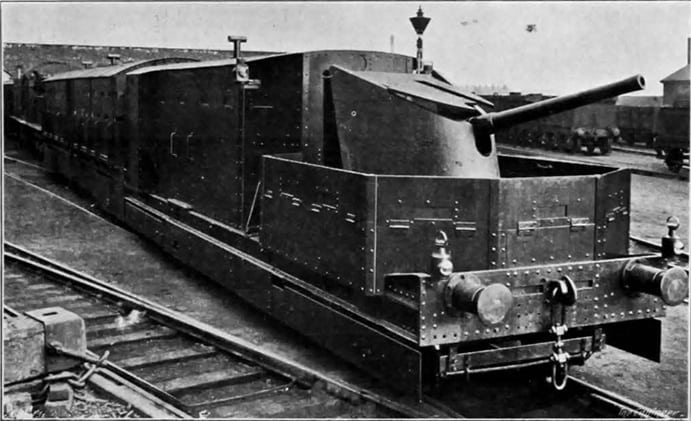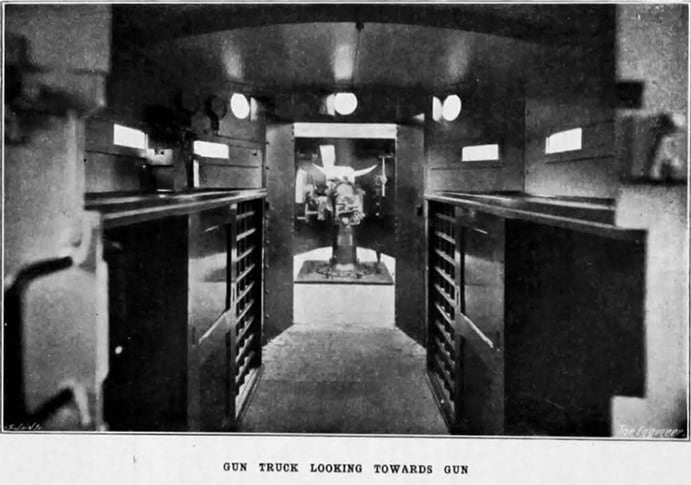The First World War saw armoured trains patrolling the coast to meet any threat from the German Navy
Immediately following both world wars, The Engineer featured articles about the machines that had helped wage war and to protect the home front. In 1919, we find a description of the fearsome armoured trains commissioned to help defend the coast.
There were two identical trains, according to the article: one for the East Anglian coast; and one for the east coast of Scotland. They were a group effort, several train companies pitching in to provide component parts. For both trains, the engines, positioned in the middle of the train, were provided by Great Northern Railways, and were 0-6-2-type tank locomotives of the kind used on what is now the District Line of the London Underground. All the parts above the frame were protected with armour plating and the cab windows had metal sliding shutters.

The idea behind the trains was that, in the event of an invasion, they would speed to the invasion site and deploy an infantry force, backed up with artillery from two gun carriages at either end of the train, which would slow down the invaders until further support arrived.
The trains carried troops, and the infantry vans were provided by the Great Western Railway, converted from 40-ton coal wagons, with half-inch-thick armour on the sides and three-eighths-of-an-inch thick on the roof. The enlisted men had an open carriage, built with a coal bunker under the floor and equipped with drinking-water tanks and a stove, while officers had the luxury of partitioned quarters. Both wagons had rifle loops along both sides.
The truly imposing part of each train was the gun wagons, positioned at either end of the train. Supplied by the Caledonian Railway company, each wagon had three compartments: a Maxim gun compartment at the end nearest to the engine; an ammunition compartment in the centre; and the main gun platform positioned at the end of the train. The guns themselves were the only parts not supplied by the railways; the main gun, a 12lb rapid firer, was supplied with 100 shells stored in pigeonholes, and was mounted between the carriage bogie wheels to distribute its weight and ensure that the recoil force did not derail the carriage. At the other end, the Maxim gun had 3,000 rounds on board, and a tank for cooling water to keep it in operation. Each gun carriage also included a small office for the officer commanding the train.

One peculiarity of these armoured trains was that they did not have to be operated from the footplate, like other steam trains of period. With the engine in the middle of the train, the driver’s view of signals and oncoming traffic would have been completely blocked. An intermediate valve alongside the train’s smokebox, with a link and lever actuated by a vacuum cylinder on the engine footplate, allowed the driver to stand at the end of the train, while communicating with the fireman stoking the engine on the footplate via a telephone.
Neither train saw action, but did provide reassurance on the coast. Both were broken up in 1919.

April 1886: the Brunkebergs tunnel
First ever example of a ground source heat pump?